What Is The Physics Behind Death Well?
The Wall of Death is a thrilling display of skill and courage that has captivated audiences for decades. But how exactly do motorcyclists defy gravity as they race around the vertical wall of a drum at breakneck speed?
This Story also Contains
- Wall Of Death
- Physics Behind The Wall Of Death
- The Importance Of Leaning Angle In Counteracting Turning Effect
- The Minimum Speed To Perform Stunt Safely
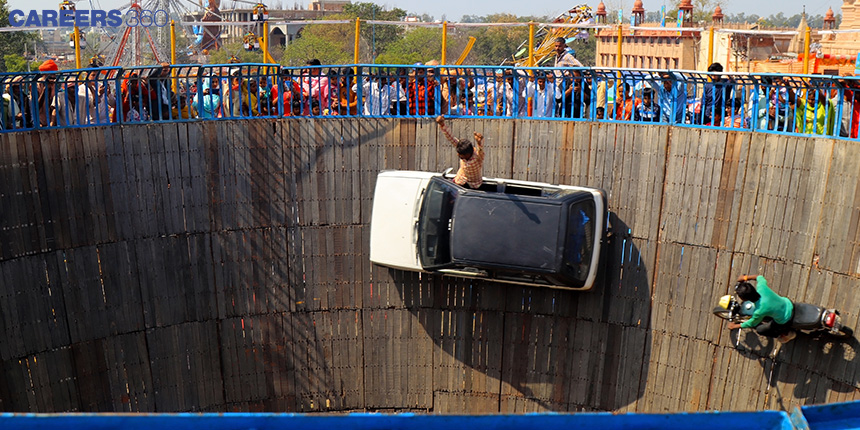
Let's delve into the physics behind this daredevil stunt and learn more about the forces like centripetal acceleration to friction and normal reaction that are at play.
Wall Of Death
The Wall of Death, also known as a Motordrome or Globe of Death, is a carnival or circus stunt where the rider races around the wall at high speeds, performing stunts such as riding on the walls, standing on the seat, or riding with a passenger. The audience watches from the sides of the drum as the rider defies gravity and creates a visually stunning performance.
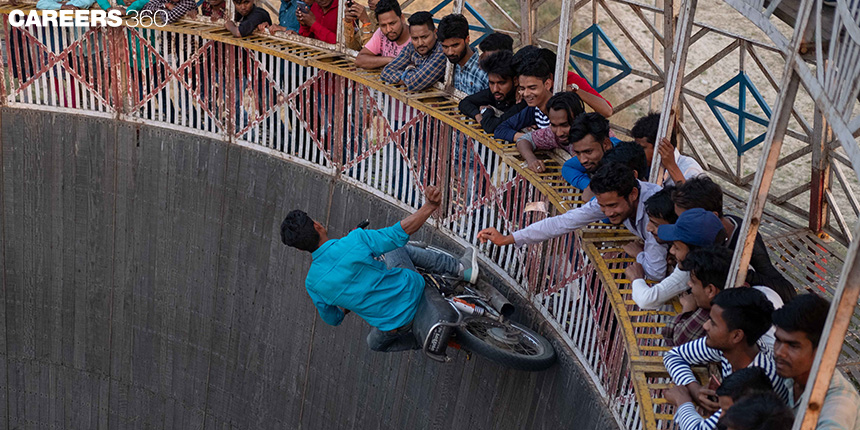
But beyond the excitement, there is a complex physics involved in keeping the rider upright and safe while performing in the Wall of Death. The rider must maintain a delicate balance of speed, centrifugal force, and friction to avoid being thrown off the wall. This requires precise control and mastery of the motorcycle, making the Wall of Death a true test of skill and bravery. It's not just a matter of speed, but also the ability to navigate the vertical space while keeping the motorcycle in control. The science behind this stunt is what makes it such an impressive feat and continues to amaze audiences to this day.
Physics Behind The Wall Of Death
Let's explore the physics behind the Wall of Death by examining the various forces that come into play during the stunt.
A number of forces come into play when a bike is moving on the walls of the structure. This encompasses the gravitational pull from the bike towards the walls, the friction from the walls opposing the bike’s tires, and the normal reaction, which is the perpendicular push from the wall when it experiences a force. The centripetal force, directed towards the centre of the bike's circular path, is also a key player. All of these forces must be in balance for the rider to remain on the walls and perform their stunts safely. The delicate balance of these forces demonstrates the high level of skill and mastery required to ride the Wall of Death.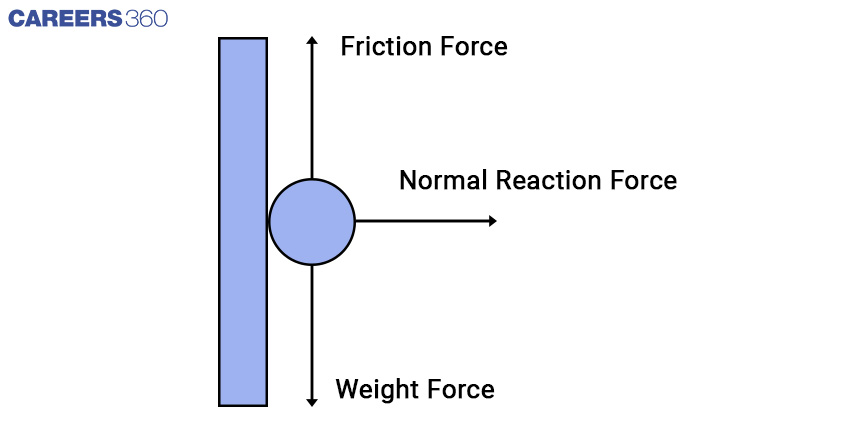
The normal reaction force enables the bike to traverse in a horizontal circular path on a vertical wall. It provides the necessary upward force to counteract the gravitational force pulling downwards. The fact that the bike does not slide down the wall shows that the friction and gravitational forces balance each other out.
Also check - Game Theory: Tips To Win Games
In simple terms, the gravitational and frictional forces work against each other, with the normal reaction from the wall keeping the bike in motion. However, the frictional force on the bike's tires is dependent on the bike's speed as it moves in the circle. The minimum speed required for the maximum frictional force to balance the gravitational force is crucial. If the gravitational force is too strong, the bike will slip down and the rider will fall. As the speed increases, the frictional force becomes stronger, but it also becomes more challenging for the rider to maintain control of the vehicle.
The Importance Of Leaning Angle In Counteracting Turning Effect
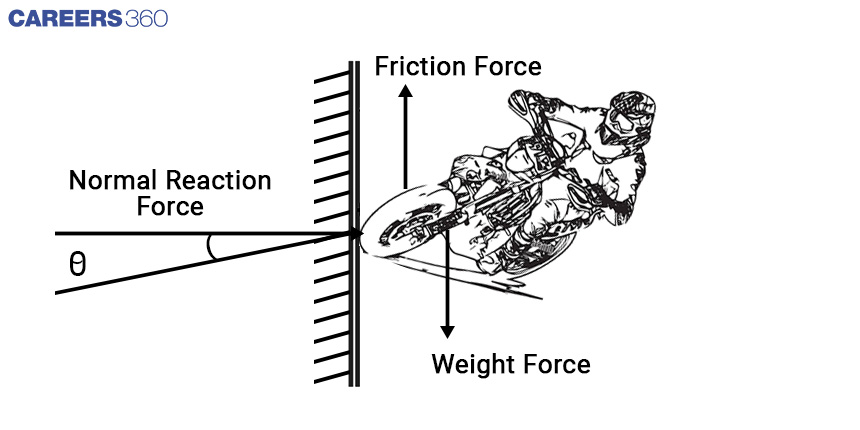
To counteract the dangerous turning effect, the rider needs to lean at an angle away from the upright. This creates a torque that counteracts the normal reaction from the wall. If the rider leans at the right angle, the torques will cancel each other out, resulting in no turning effect on the bike and allowing the stunt to continue.
However, if the rider does not lean at the correct angle, the torques will be unbalanced and cause the bike to turn and fall. To maintain balance, the rider must apply extra force in the opposite direction to compensate for the imbalance.
The Minimum Speed To Perform Stunt Safely
In a death well, an individual rides either a bicycle or a motorcycle along the vertical surface of a large wooden well. The walls of the death well are stationary, and the friction between the person and the surface compensates for their weight, while the wall's reaction provides the centripetal force needed for circular motion. The forces involved are depicted in the accompanying illustration.
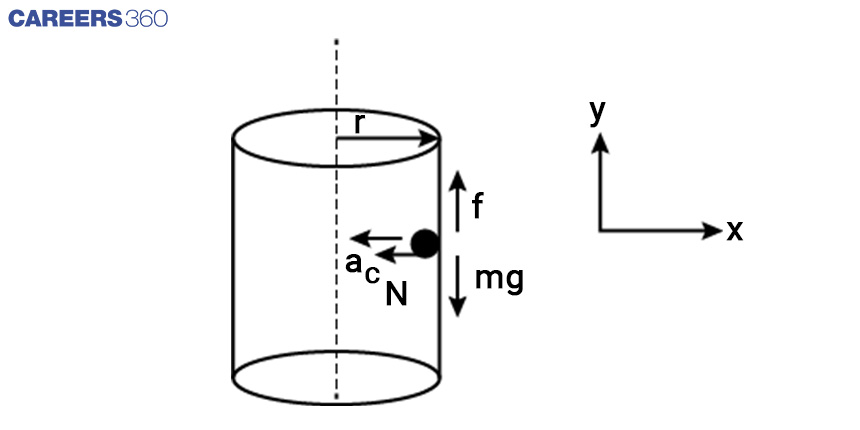
We know for uniform circular motion
Centripetal acceleration,
$a_c=\frac{m v^2}{r}$
From the Free body diagram, along the X-axis
$\mathrm{N}=\frac{m v^2}{r}$
Along Y-axis
f=mg
We know that
f= μN
$\begin{aligned} & \therefore m g=\mu\left(\frac{m v^2}{r}\right) \\ & \Rightarrow \mathrm{v}=\sqrt{\frac{g r}{\mu}} \end{aligned}$
The Wall of Death may appear to be a death-defying stunt, but it's actually a combination of intricate forces and the rider's skill and bravery. The next time you see this stunt at a carnival or motorcycle show, you'll appreciate the complexity behind it and experience the physics behind it.
Also check - Factors That Affect The Longevity Of Life
Applications for Admissions are open.
As per latest syllabus. Physics formulas, equations, & laws of class 11 & 12th chapters
JEE Main Important Chemistry formulas
Get nowAs per latest syllabus. Chemistry formulas, equations, & laws of class 11 & 12th chapters
JEE Main high scoring chapters and topics
Get nowAs per latest 2024 syllabus. Study 40% syllabus and score upto 100% marks in JEE
JEE Main Important Mathematics Formulas
Get nowAs per latest syllabus. Maths formulas, equations, & theorems of class 11 & 12th chapters
